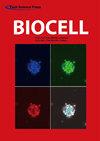求助PDF
{"title":"Magnetic mitohormesis: A non-invasive therapy for inflammatory disorders?","authors":"Alfredo FRANCO-OBREG覰","doi":"10.32604/biocell.2023.025357","DOIUrl":null,"url":null,"abstract":"An organism's survival depends on its ability to adapt to stress. Mitochondria are the cellular integrators of environmental stressors that ultimately translate their responses at the organismal level, and are thus central to the process whereby organisms adapt to their respective environments. Mitochondria produce molecular energy via oxidative phosphorylation that then allows cells to biosynthetically respond and adapt to changes in their environment. Reactive oxygen species (ROS) are by-products of oxidative phosphorylation that can be either beneficial or damaging, depending on the context;ROS are hence both the conveyors of environmental stress as well as cellular \"adaptogens”. Mitohormesis refers to the process whereby low levels of oxidative stress spur survival adaptations, whereas excessive levels stymie survival. Low energy and frequency pulsing electromagnetic fields have been recently shown capable of stimulating mitochondrial respiration and ROS production and instilling mitohormetic survival adaptations, similarly to, yet independently of, exercise, opening avenues for the future development of Magnetic Mitohormetic interventions for the improvement of human health. This viewpoint explores the possibilities and nuances of magnetic-based therapies as a form of clinical intervention to non-invasively activate magnetic mitohormesis for the management of chronic diseases. © 2023 Centro Regional de Invest. Cientif. y Tecn.. All rights reserved.","PeriodicalId":55384,"journal":{"name":"Biocell","volume":"22 1","pages":""},"PeriodicalIF":0.8000,"publicationDate":"2023-01-01","publicationTypes":"Journal Article","fieldsOfStudy":null,"isOpenAccess":false,"openAccessPdf":"","citationCount":"3","resultStr":null,"platform":"Semanticscholar","paperid":null,"PeriodicalName":"Biocell","FirstCategoryId":"99","ListUrlMain":"https://doi.org/10.32604/biocell.2023.025357","RegionNum":4,"RegionCategory":"生物学","ArticlePicture":[],"TitleCN":null,"AbstractTextCN":null,"PMCID":null,"EPubDate":"","PubModel":"","JCR":"Q4","JCRName":"BIOLOGY","Score":null,"Total":0}
引用次数: 3
引用
批量引用
磁性有丝分裂:炎症性疾病的非侵入性治疗?
有机体的生存取决于它适应压力的能力。线粒体是环境压力源的细胞整合者,最终在生物体水平上翻译它们的反应,因此是生物体适应各自环境过程的核心。线粒体通过氧化磷酸化产生分子能量,然后允许细胞生物合成响应和适应环境的变化。活性氧(ROS)是氧化磷酸化的副产物,根据环境的不同,它可能是有益的,也可能是有害的;因此,ROS既是环境应激的传送带,也是细胞的“适应原”。有丝分裂是指低水平的氧化应激刺激生存适应,而过高的氧化应激则阻碍生存的过程。低能量和频率的脉冲电磁场最近被证明能够刺激线粒体呼吸和ROS的产生,并灌输线粒体促分裂生存适应,类似于运动,但独立于运动,为未来发展磁促分裂干预改善人类健康开辟了道路。这一观点探讨了磁性疗法作为一种临床干预形式的可能性和细微差别,以非侵入性激活磁性有丝分裂,用于慢性疾病的管理。©2023 Centro Regional de Invest。Cientif。y天益. .版权所有。
本文章由计算机程序翻译,如有差异,请以英文原文为准。


